Hello Everyone:
Yours Truly is back and ready to move on to another subject. Before we get going on the housing crisis in California, a word about the Special Counsel's report: The fallout continues. The problem is the lethal combination of politics and the judicial system. The role of the special counsel is a apolitical person whose job it is to determine if there was any criminal wrongdoing by the president. Robert Mueller and his team could not reach that conclusion so they passed it off to the Department of Justice, who decided to clear the president of criminal acts. The only way to really figure out if crimes of obstruction were committed, then the report has to be released, no ifs, ands, or buts about it. One more thing, just a reminder that Google + is going away on April 2nd but the blog will not. It will still be available on Facebook and Twitter. Onward.
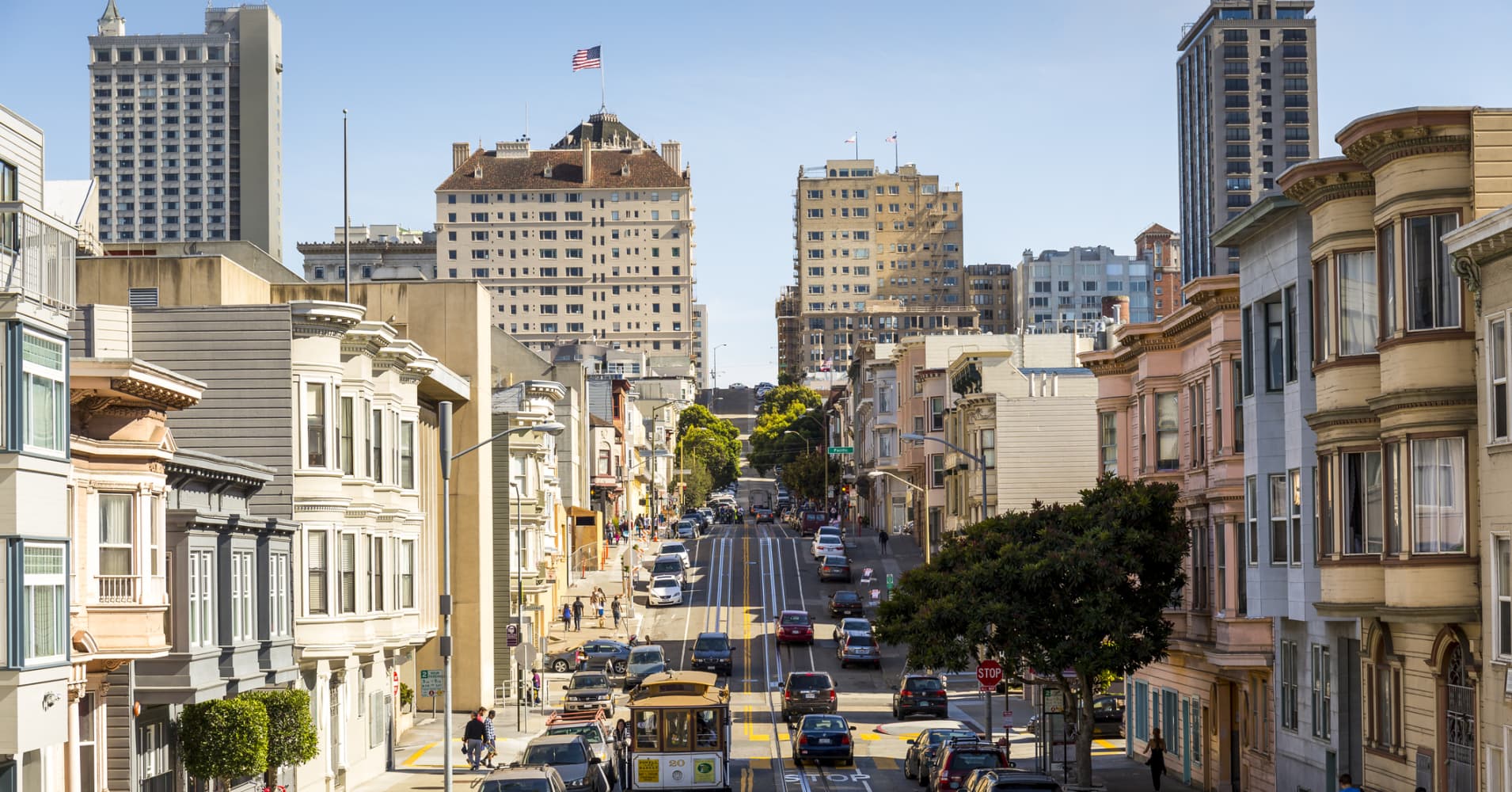 |
| San Francisco street scene cnbc.com |
 |
| State Senator Scott Wiener, Assemblyman David Chiu, State Senator Nancy Skinner modernluxury.com |
The chairs of the State Legislature's housing committee, Democrats State Senator Scott Wiener and Assemblyman David Chiu, are both form in San Francisco. Former San Francisco mayor, now, Governor Gavin Newsom is their ally and has made housing one of his top priorities. Even more fascinating is that a group of powerful Bay Area groups are supporting the proposed legislation, creating an rare level of unity, not seen anywhere in the state. A little easy to do when the majority of the state Senate and Assembly are Democrats.
In a way, it is logical that the Bay Area would lead the charge in crafting a solution to housing affordability, considering it has the dubious distinction of having the highest housing costs in the United States. Be that as it may, the Bay Area also the possessor of an extensive transit system that could throw a wrench into any universal solution to housing challenges. Elected officials and local groups, outside the San Francisco Bay Area are concerned that the "region's lawmakers will push legislation that doesn't account for the challenges faced elsewhere" (Ibid). Those fear are based on recent history.
Last year, Los Angeles housing activists felt blindsided by another proposed piece of legislation by Senator Wiener to increase housing costs near transit lines. Liam Dillion reports, "They worried that it would have undermined recently enacted plans aimed at preventing gentrification and displacement in their communities, and their opposition helped sink the bill" (Ibid).
Elected officials outside the Bay Area have a stake in the Legislature's housing debates, and acknowledge that they need to be much more assertive in protecting their constituents' interests.
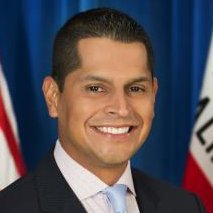 |
| State Assemblyman Miguel Santiago votesmart.org |
Southern California State Assemblyman Miguel Santiago told the Los Angeles Times,
There is a need for us in Southern California to be more aggressive about developing the housing that is absolutely needed and that reflects the needs of constituencies,... We have got to push really hard on any dollars that are expended in the state of California to match the communities we represent...(Ibid)
The San Francisco Bay Area's affordability problems are unique for the state.
The median home values in this region is the highest in the country--the median home values in San Francisco topped out at $1,365,700 (zillow.com; date Mar. 26, 2019). The average rent in San Francisco is $3,609 per month (rentcafe.com; date accessed Mar. 26, 2019). Compare this with median home values in Los Angeles: $694,200 (zillow.com; date Mar. 26, 2019) and average rent: $2371 per month (rentcafe.com; date accessed Mar. 26, 2019). Although California is experiencing strong job growth since the recession, the Bay Area has new employment growth outpace new home construction at an unparalleled rated, unmatched anywhere, aggravating home shortages in the region.
University of Southern California sociology professor Manuel Pastor told the Times,
Even as we in Southern California are experiencing strong gentrification and displacement pressures, they're nothing compared to what has happened in Northern California,... Large swaths of Northern California are out of reach to the average renter and home buyer. (latimes.com; Mar. 20, 2019)
State Senator Scott Wiener and his fellow Bay Area state legislators are setting the housing policy agenda with help from regional interest groups.
Liam Dillon reports, "Over the last 18 months, officials from Bay Area cities, nonprofits, developers, labor groups and others wrote a plan to address the region's affordability crisis" (Ibid). The plan is called the CASA (The Committee to House the Bay Area) Compact (mtc.ca.gov; date accessed Mar. 26, 2019), which is dependent on numerous changes to state law. Mr. Dillon continues, "In response, Bay Area legislators have introduced bills including proposals that would provide tenants with legal counsel and present them from being evicted without cause, and allow homeowner to more easily build second housing units, or casitas, on their properities" (Ibid).
Almost all the proposed housing affordability solutions would affect the entire state and require other perspectives. In the California State Legislature, lawmakers from Southern California still hold considerable sway over housing policy. They also head the key budget and fiscal committees. Case in point, the California State Assembly Speaker is Los Angeles Democrat Anthony Rendon and Senate President Pro Tempore Toni Atkins is from San Diego. Los Angeles-area lawmakers have proposed rent control legislation (latimes.com; Jan. 11, 2018) and an end to public housing restrictions (Ibid; Feb. 2. 2019).
State Senator Toni Atkins was a low-income housing consulting before being elected to the Legislature and helped write major legislation to help fund new projects (Ibid: Sept. 15, 2017). By the end of 2018, she approved State Senator Wiener's hard charging approach to dealing with affordability problems by conveniently creating a Senate housing committee and appointing him chair (twitter.com/@dillonliam; Dec. 21, 2018; date accessed Mar. 26, 2019).
Housing costs is one reason why "the rent's [mortgage] too damn high" to afford living in California. The reason is wages are low. Mr. Dillon writes, "The median household income in the Los Angeles region is below $70,000, which is lower than the state average and just 60% of Silicon Valley's" (latimes.com ; Mar. 20, 2019). Richard Green, the director of the USC Lusk Center for Real Estate told the Times,
In Southern California, it's as much of an income problem as it is a housing problem (Ibid).
The socioeconomic gap between the Bay Area and Southern California was underscored last when Senator Wiener introduced a bill that would have made it easier to build apartments near transit lines. Los Angeles activists had just completed a decade's worth of work on developing a plan for historically African American and Latino South Los Angeles and a scheme to increase density near transit line. Worried that Senator Wiener's bill would override their plan and displace longtime residents, they opposed the bill, letting it die in committee (Ibid; May 2, 2018).
Mariana Huerta Jones, the campaign and communications manager for Alliance for Community Transit-Los Angeles, said "Wiener took the group's criticisms to heart and incorporated many of its ideas--including stricter prohibitions against demolishing rental housing--into Senate Bill 50, a new version of the legislation he's introduced this year [Ibid; Dec 4, 2018]." Measure SB50 would allow low-rise apartment complexes near transit. Ms. Huerta Jones' organization has yet to take a position on the bill but is in regular contact with Senator Wiener's office. She said,
The senator really is genuine and wants to do something about housing crisis,... We really appreciate that, and it's exciting he's being bold. But being bold also means being humble and appreciating how what you're proposing could have impacts across the state--all the way down to San Diego and into rural areas. (Ibid; Mar. 20, 2019)
This year's version of SB50 and related bills are part of a host of Bay Area housing legislation that could disrupt policies that have strong support outside the region.
In the seventies, San Diego voters approved a 30-foot height limit (docs.sandiego.gov; effective Jan. 1, 2000; date accessed Mar. 26, 2019) for construction along the coastline and mandated a public vote on taller buildings. Senator Scott Wiener's bill would override that housing rule for buildings near transit lines. State Senator Nancy Skinner (D-Berkeley) introduced Senate Bill 30 (latimes.com; Feb. 20, 2019; date accessed Mar. 26, 2019) which would end with city and county restrictions on homebuilding for ten years--"a response, she's said, to the scope of the state's housing challenges. San Diego's height limit would be suspended for new homes should pass,..." (Ibid; Mar. 20, 2019).
Although it is still early in the legislative process, Senator Skinner's could impact how much the city of Los Angeles could charge developers via a fee approved in late 2017 (Ibid; Dec. 13, 2017) that would raise millions to build low-income housing and is a key part of Mayor Eric Garcetti's platform.
Senator Wiener said "it is vital for Bay Area lawmakers to understand other areas of California and point to his efforts to incorporate form Los Angeles activists into SB50.... he said that many housing concerns are the same throughout the state" (Ibid; Mar. 20, 2019). He also pointed out that he received the same feedback in San Francisco and Los Angeles. He told the Los Angeles Times,
It's not so different when it comes to education policy that affects the whole state,... (Ibid)
State Assemblyman David Chiu, the housing committee chair, said "it's possible Bay Areas legislators could scale back their housing bills so that they only affect the region. But sometimes, he said, housing problems are best tackled by those on the outside" (Ibid).
In 2018, Assemblyman Chiu wrote legislation that would withhold state housing money from any community that permitted its City Council members to block homeless housing building in their districts before a formal vote. He introduced the bill to halt the practice in Los Angeles (Ibid; Mar. 12, 2018), where City Council had recently blocked projects in their districts by withholding support before a proper hearing.
Assemblyman Chiu said, "activists in Los Angeles asked him to carry the bill because it was too politically fraught for a legislator from Southern California to do so" (Ibid; Mar. 20, 2019). The measure was unanimously approved by both houses of the Legislature and signed into law by former Governor Jerry Brown (Ibid; Sept. 27, 2018). Assemblyman David Chiu said,
There were many significant leaders in Los Angeles that were happy to see it pass" (Ibid; Mar. 20, 2019)
The San Francisco Bay Area's affordability problems are unique for the state.
The median home values in this region is the highest in the country--the median home values in San Francisco topped out at $1,365,700 (zillow.com; date Mar. 26, 2019). The average rent in San Francisco is $3,609 per month (rentcafe.com; date accessed Mar. 26, 2019). Compare this with median home values in Los Angeles: $694,200 (zillow.com; date Mar. 26, 2019) and average rent: $2371 per month (rentcafe.com; date accessed Mar. 26, 2019). Although California is experiencing strong job growth since the recession, the Bay Area has new employment growth outpace new home construction at an unparalleled rated, unmatched anywhere, aggravating home shortages in the region.
University of Southern California sociology professor Manuel Pastor told the Times,
Even as we in Southern California are experiencing strong gentrification and displacement pressures, they're nothing compared to what has happened in Northern California,... Large swaths of Northern California are out of reach to the average renter and home buyer. (latimes.com; Mar. 20, 2019)
State Senator Scott Wiener and his fellow Bay Area state legislators are setting the housing policy agenda with help from regional interest groups.
Liam Dillon reports, "Over the last 18 months, officials from Bay Area cities, nonprofits, developers, labor groups and others wrote a plan to address the region's affordability crisis" (Ibid). The plan is called the CASA (The Committee to House the Bay Area) Compact (mtc.ca.gov; date accessed Mar. 26, 2019), which is dependent on numerous changes to state law. Mr. Dillon continues, "In response, Bay Area legislators have introduced bills including proposals that would provide tenants with legal counsel and present them from being evicted without cause, and allow homeowner to more easily build second housing units, or casitas, on their properities" (Ibid).
Almost all the proposed housing affordability solutions would affect the entire state and require other perspectives. In the California State Legislature, lawmakers from Southern California still hold considerable sway over housing policy. They also head the key budget and fiscal committees. Case in point, the California State Assembly Speaker is Los Angeles Democrat Anthony Rendon and Senate President Pro Tempore Toni Atkins is from San Diego. Los Angeles-area lawmakers have proposed rent control legislation (latimes.com; Jan. 11, 2018) and an end to public housing restrictions (Ibid; Feb. 2. 2019).
 |
| State Senate President Pro Tempore Toni Atkins kpbs.org |
State Senator Toni Atkins was a low-income housing consulting before being elected to the Legislature and helped write major legislation to help fund new projects (Ibid: Sept. 15, 2017). By the end of 2018, she approved State Senator Wiener's hard charging approach to dealing with affordability problems by conveniently creating a Senate housing committee and appointing him chair (twitter.com/@dillonliam; Dec. 21, 2018; date accessed Mar. 26, 2019).
Housing costs is one reason why "the rent's [mortgage] too damn high" to afford living in California. The reason is wages are low. Mr. Dillon writes, "The median household income in the Los Angeles region is below $70,000, which is lower than the state average and just 60% of Silicon Valley's" (latimes.com ; Mar. 20, 2019). Richard Green, the director of the USC Lusk Center for Real Estate told the Times,
In Southern California, it's as much of an income problem as it is a housing problem (Ibid).
The socioeconomic gap between the Bay Area and Southern California was underscored last when Senator Wiener introduced a bill that would have made it easier to build apartments near transit lines. Los Angeles activists had just completed a decade's worth of work on developing a plan for historically African American and Latino South Los Angeles and a scheme to increase density near transit line. Worried that Senator Wiener's bill would override their plan and displace longtime residents, they opposed the bill, letting it die in committee (Ibid; May 2, 2018).
Mariana Huerta Jones, the campaign and communications manager for Alliance for Community Transit-Los Angeles, said "Wiener took the group's criticisms to heart and incorporated many of its ideas--including stricter prohibitions against demolishing rental housing--into Senate Bill 50, a new version of the legislation he's introduced this year [Ibid; Dec 4, 2018]." Measure SB50 would allow low-rise apartment complexes near transit. Ms. Huerta Jones' organization has yet to take a position on the bill but is in regular contact with Senator Wiener's office. She said,
The senator really is genuine and wants to do something about housing crisis,... We really appreciate that, and it's exciting he's being bold. But being bold also means being humble and appreciating how what you're proposing could have impacts across the state--all the way down to San Diego and into rural areas. (Ibid; Mar. 20, 2019)
This year's version of SB50 and related bills are part of a host of Bay Area housing legislation that could disrupt policies that have strong support outside the region.
In the seventies, San Diego voters approved a 30-foot height limit (docs.sandiego.gov; effective Jan. 1, 2000; date accessed Mar. 26, 2019) for construction along the coastline and mandated a public vote on taller buildings. Senator Scott Wiener's bill would override that housing rule for buildings near transit lines. State Senator Nancy Skinner (D-Berkeley) introduced Senate Bill 30 (latimes.com; Feb. 20, 2019; date accessed Mar. 26, 2019) which would end with city and county restrictions on homebuilding for ten years--"a response, she's said, to the scope of the state's housing challenges. San Diego's height limit would be suspended for new homes should pass,..." (Ibid; Mar. 20, 2019).
Although it is still early in the legislative process, Senator Skinner's could impact how much the city of Los Angeles could charge developers via a fee approved in late 2017 (Ibid; Dec. 13, 2017) that would raise millions to build low-income housing and is a key part of Mayor Eric Garcetti's platform.
Senator Wiener said "it is vital for Bay Area lawmakers to understand other areas of California and point to his efforts to incorporate form Los Angeles activists into SB50.... he said that many housing concerns are the same throughout the state" (Ibid; Mar. 20, 2019). He also pointed out that he received the same feedback in San Francisco and Los Angeles. He told the Los Angeles Times,
It's not so different when it comes to education policy that affects the whole state,... (Ibid)
State Assemblyman David Chiu, the housing committee chair, said "it's possible Bay Areas legislators could scale back their housing bills so that they only affect the region. But sometimes, he said, housing problems are best tackled by those on the outside" (Ibid).
In 2018, Assemblyman Chiu wrote legislation that would withhold state housing money from any community that permitted its City Council members to block homeless housing building in their districts before a formal vote. He introduced the bill to halt the practice in Los Angeles (Ibid; Mar. 12, 2018), where City Council had recently blocked projects in their districts by withholding support before a proper hearing.
Assemblyman Chiu said, "activists in Los Angeles asked him to carry the bill because it was too politically fraught for a legislator from Southern California to do so" (Ibid; Mar. 20, 2019). The measure was unanimously approved by both houses of the Legislature and signed into law by former Governor Jerry Brown (Ibid; Sept. 27, 2018). Assemblyman David Chiu said,
There were many significant leaders in Los Angeles that were happy to see it pass" (Ibid; Mar. 20, 2019)
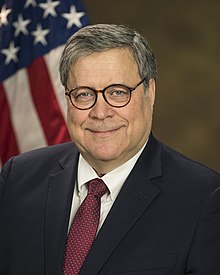
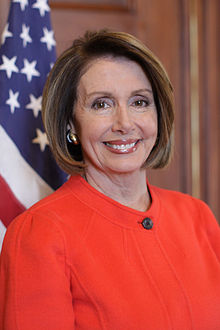
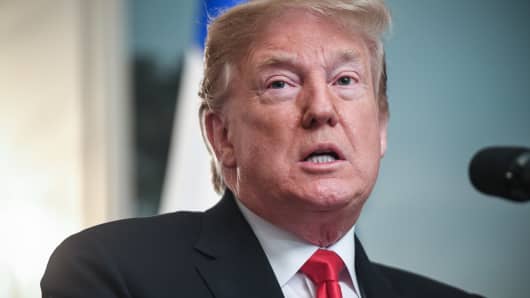



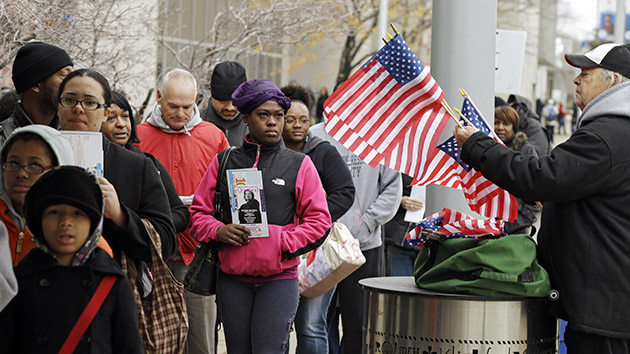

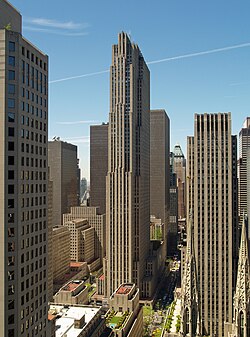
:max_bytes(150000):strip_icc()/isozaki-crop-56aadc163df78cf772b49722.jpg)